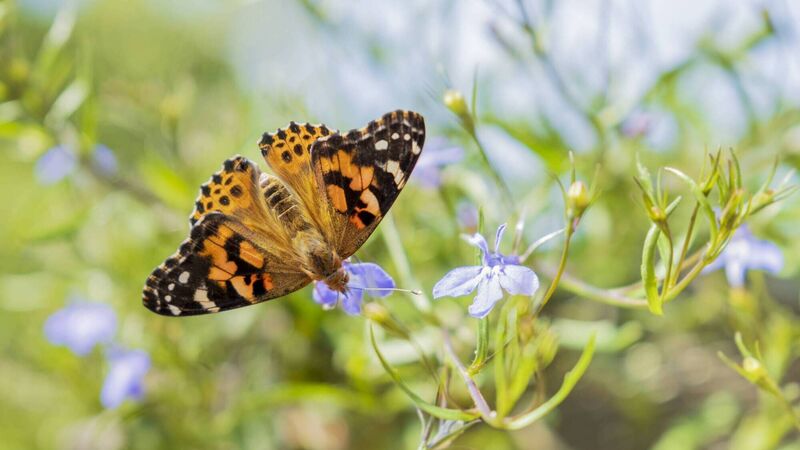Richard Collins: The journey of the painted lady butterfly that has raised eyebrows

A painted lady butterfly resting on a flower.
Butterflies symbolise fragility and the transience of life, but a discovery in South America has raised entomological eyebrows; a flock of painted lady butterflies turned up on a French Guiana beach in October 2013. Although the painted lady is one of the most widely distributed butterfly species worldwide, it is absent from South America. So from where had these visitors come?
Orange with black-white-spotted wingtips, this glamorous insect is one of the largest Irish species. A ‘trans-generational migrant’, it arrives here around May or June each year and disappears in the autumn.
The journey begins in Morocco. Painted ladies, hatched there, cross the Mediterranean to Europe where the new generation then breeds. Their offspring, in turn, travel on northwards. Biochemist S E Gould, writing in , claimed that painted ladies make "a 9,000-mile round trip, from the tropics of Africa to the Arctic Circle" over "six generations". Those arriving in Ireland are probably the great-great-grandchildren of Moroccan ones.
Numbers vary greatly depending on weather conditions but, in good migratory years, this glamourous insect is common throughout Ireland. According to butterfly expert David Nash, the eggs are laid on creeping and spear thistles. "The large numbers observed in August-September are usually the offspring of earlier migrants," he notes.
The species doesn’t survive our Irish winter. A project carried out in the UK in the autumn of 2009 used high-altitude radar to track the insects. It showed that butterflies head back southwards in autumn, travelling at altitudes of up to 500m, exploiting favourable winds.
Had the French Guiana visitors done likewise? Like our Old World species, the American painted lady is also a transgenerational migrant. There were about ten individuals, three of which were captured alive. Dishevelled and ragged; they had clearly completed a very long flight. Gerard Talavera of the Institut Botànic de Barcelona has been investigating.
Three possible origins were considered. The butterflies could have travelled southwards from North America. There would have been ample opportunities for ‘rest and recreation’ along the way. Alternatively, they might have crossed the Atlantic from Africa. Was it even possible that they had come from far away Europe? It seemed most unlikely that such fragile creatures could fly non-stop over thousands of kilometres.
Talavera’s team examined the patterns of global wind at the time of the butterfly flock discovery. DNA sequences were logged and isotope analyses were undertaken. Pollen grains carried by the insects provided further evidence of possible origin.
When the jigsaw of evidence was completed, an extraordinary picture emerged. The insects’ DNA profiles were closer to those of African and European painted-ladies than to North American ones. Some pollen grains were African, while the isotope analysis indicated a European origin. The wind directions had been favourable to an Atlantic crossing.
Analysis suggested that a journey of five to eight days was possible. The butterflies could travel over 700km by flapping their wings. Their fuel would then be exhausted but favourable winds could have carried them for the rest of the journey. Saharan dust reaches South America occasionally.
- Tomas Suchan et al. A trans-oceanic flight of over 4,200 miles by painted lady butterflies. Nature Communications. 2025.







